EQ is one of the most powerful tools in a music producer’s arsenal, hands down.
It can help you shape the tonal balance of a mix, remove unwanted resonances, and enhance the best qualities of each element.
With the right knowledge, you can make precise cuts, add warmth, brighten dull tracks, and create a professional sound that really stands out.
Plus, you’ll be able to dial in clarity, add punch, and balance frequency ranges like an absolute boss.
That’s why, as music producers, it’s non-negotiable to know all about EQ and all the different EQ types, like:
- Parametric EQ for pinpoint precision ✓
- Graphic EQ for quick visual adjustments ✓
- Shelving EQ for broad tone shaping ✓
- Dynamic EQ for reactive frequency control ✓
- Linear Phase EQ for transparent mastering ✓
- Bell Curve EQ for smooth, natural adjustments ✓
- Notch EQ for surgical cuts ✓
- Mid/Side EQ for stereo width control ✓
- Tilt EQ for quick tonal shifts ✓
- Different EQ filters ✓
- The best EQ plugins ✓
- Much more about all the different EQ types ✓
After reading this article, you’ll know everything about all the different EQ types and how to use them to enhance your mixes and create super unique sounds.
Plus, solve any tonal issues that come up, like a true expert.
This way, you can handle any mixing or mastering challenge with confidence and never feel stuck when it comes to shaping your tracks.
Your mixes will be cleaner, more balanced, and always ready to blow the competition away.
So, let’s dive in…
Table of Contents
What is EQ in Music Production?
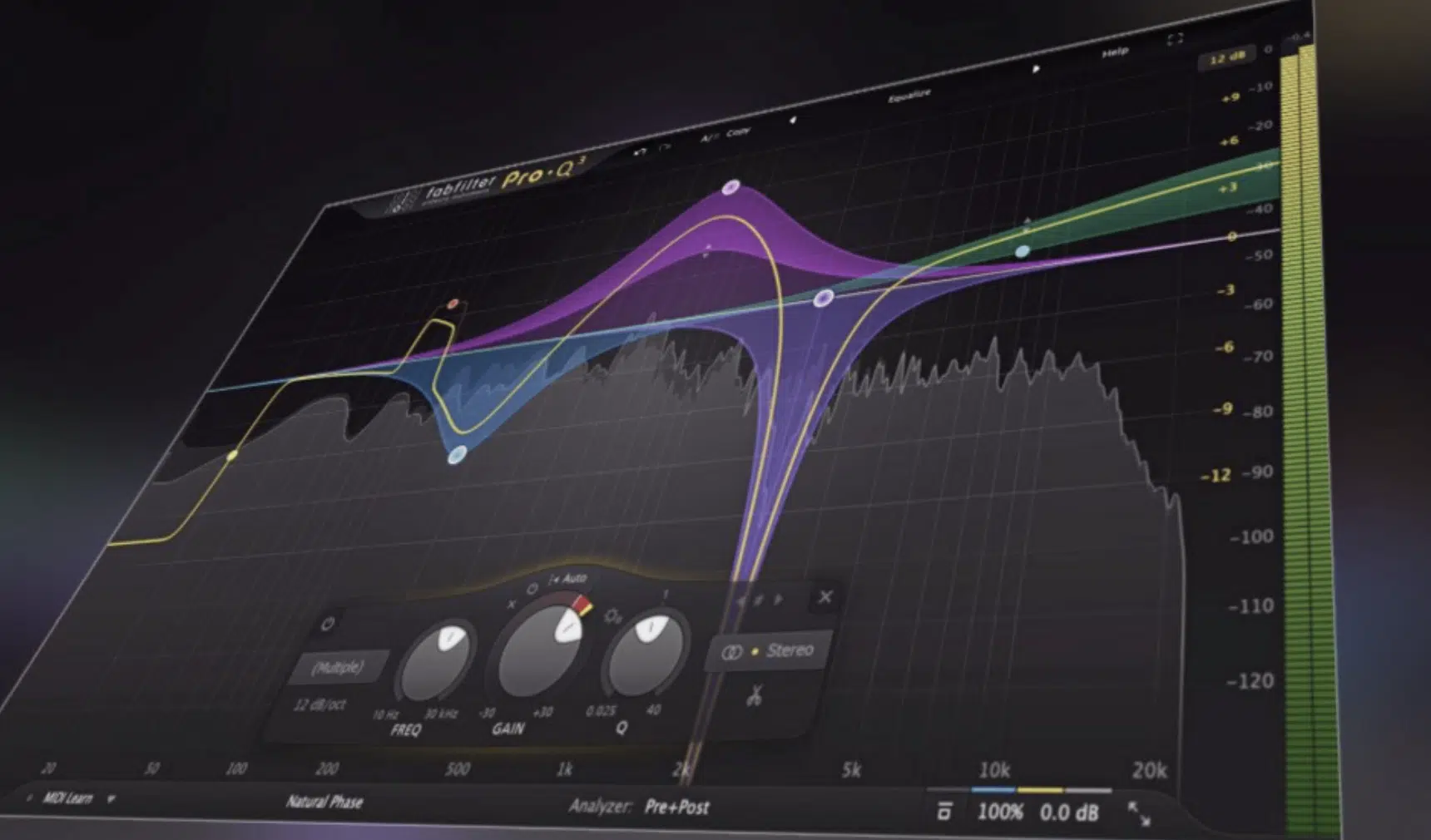
EQ (equalization) is a powerful tool that allows you to shape the frequency balance of an audio signal by boosting or cutting specific frequencies.
With various EQ types available, you can fine-tune elements in a mix to:
- Enhance clarity
- Create space
- Add warmth
Whether you’re dealing with muddy bass frequencies or harsh high frequencies, knowing how to use EQ effectively is key for achieving a professional sound.
Mastering different types of EQ, such as parametric EQs, dynamic equalizers, and linear phase EQs, will help you sculpt your mixes with precision and creativity.
And today, we’ll be covering all the different EQ types so you really get a solid understanding and can make your tracks shine.
The Different Types of EQ
There are many types of EQ you need to know to take your mixing skills to the next level. Let’s break down the different types of EQ, their unique characteristics, and when to use them for the best results in your mix.
1. Parametric EQ
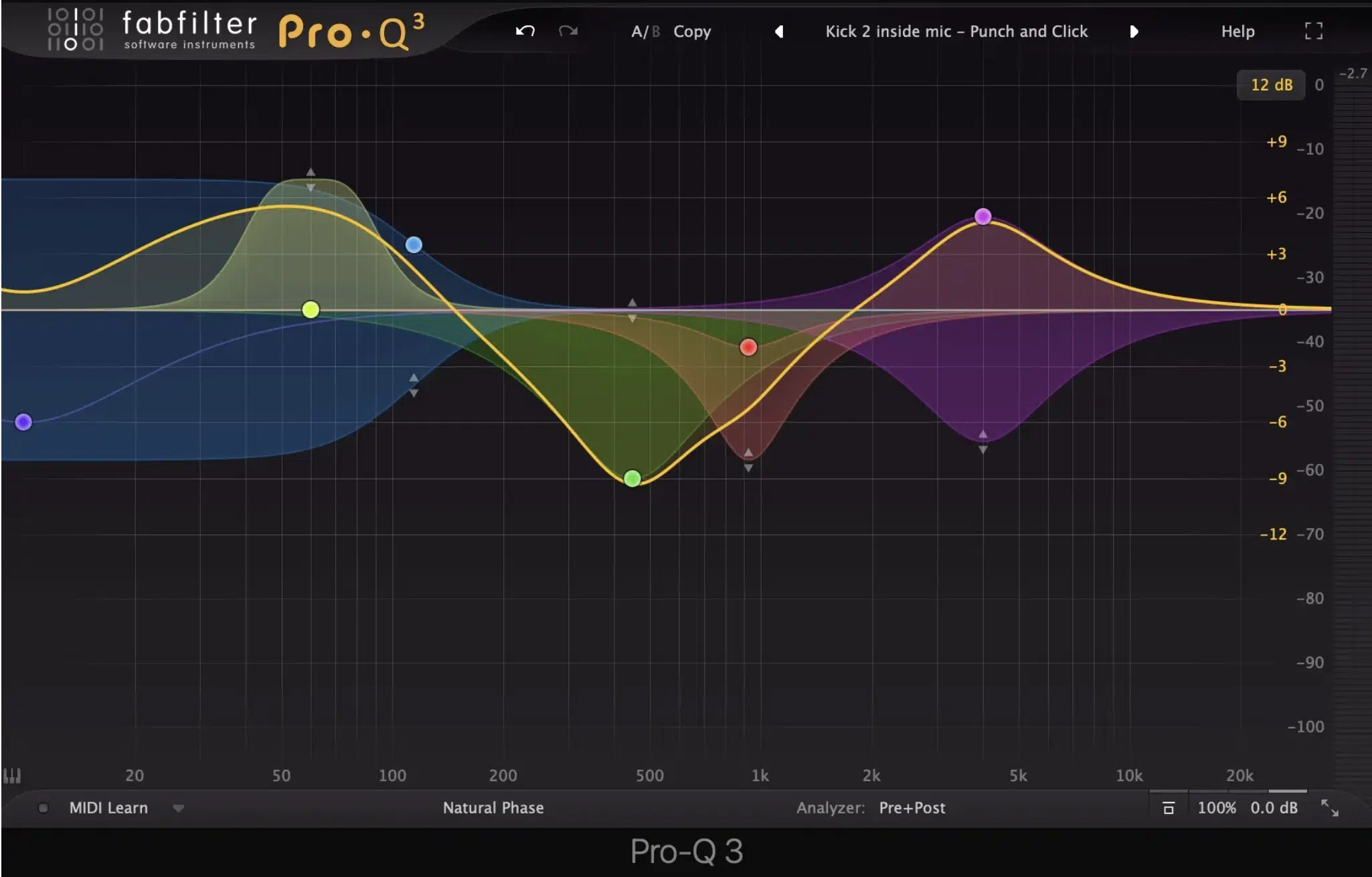
Parametric EQ gives you complete control over your mix’s frequency spectrum, allowing you to adjust the center frequency, bandwidth (or Q), and gain of each band.
This is perfect for pinpointing problematic frequencies and making precise cuts or boosts, like removing boxiness from a vocal or adding brightness to cymbals.
Parametric equalizers are commonly used for their versatility, whether you’re working with digital parametric EQs in your DAW or a fully parametric EQ on a hardware unit.
When using a parametric EQ, focus on sweeping through the frequency range to identify areas that need enhancing or attenuating frequencies.
If you need to clean up a muddy mix, try using a narrow Q to cut specific bass frequencies or midrange muddiness without affecting other frequency bands.
2. Graphic EQ

Graphic EQ types offer a visual representation of your frequency spectrum with fixed bands (typically ranging from 5 to 31 sliders) 一 each controlling a specific frequency band.
This type is ideal for broad EQ adjustments, like shaping the tonal character of a guitar amp or making quick corrections during a live performance.
With graphic EQs, you adjust fixed frequencies rather than sweeping through frequency ranges like with a parametric equalizer…
This means you’ll have less flexibility but more straightforward control.
If you’re trying to remove feedback on a live stage, a graphic EQ lets you quickly cut narrow bands to address specific issues without affecting the overall sound.
NOTE: Keep in mind that while graphic EQs provide quick solutions, they lack the finesse of parametric and dynamic equalizers and other like EQ types for intricate mixing tasks.
3. Shelving EQ
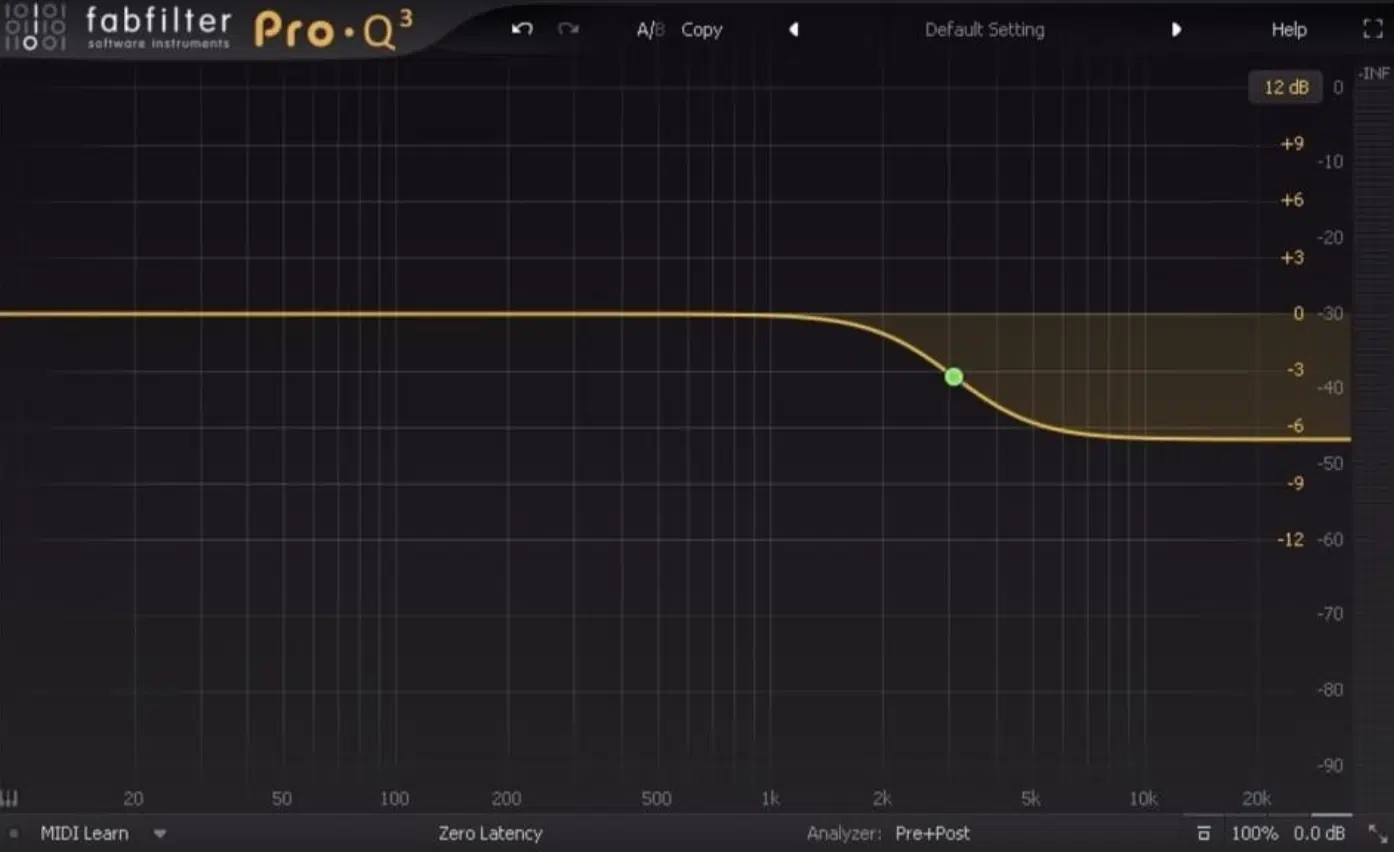
A shelving EQ allows you to adjust all frequencies above or below a chosen cutoff point by a certain amount 一 making it ideal for overall tonal shaping.
For example, a high-shelf filter boosts or cuts all high frequencies above a set frequency, which is great for adding airiness to vocals or brightness to cymbals.
On the same note, a low-shelving filter adjusts all low frequencies below the cutoff frequency, perfect for thickening a bassline or kick drum.
When you want to add warmth to a mix, using a low-shelf filter around 100 Hz can add depth to the low-end without muddying up the mix, which is always what you want.
NOTE: Shelving EQs are excellent for broad changes but less effective for targeting specific frequencies compared to parametric equalizers.
4. Dynamic EQ
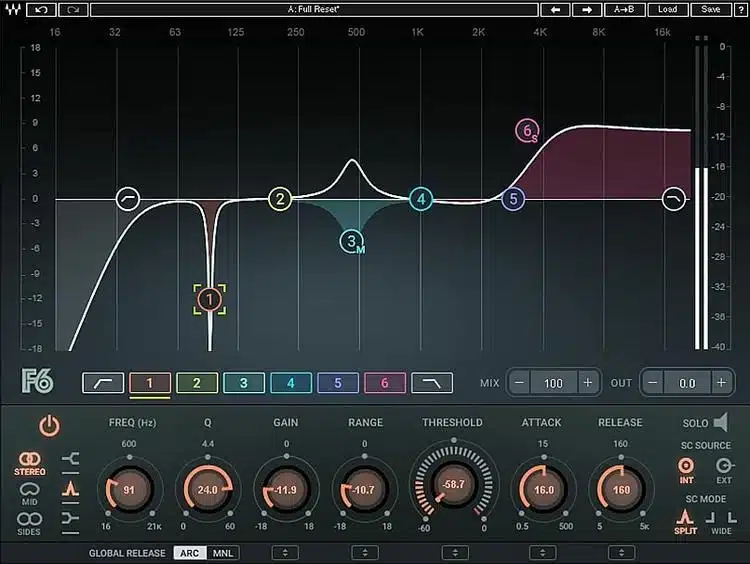
A dynamic EQ combines the precision of a parametric EQ with the reactive nature of a compressor, giving you dynamic control over specific frequency bands.
This means you can set it to react only when a certain frequency exceeds a set threshold.
It’s perfect for taming harsh vocals or resonant frequencies that pop out only occasionally, not all the time.
For example, you might use a dynamic EQ to control sibilance on a vocal track, triggering only when high frequencies become way too pronounced.
Unlike static EQ adjustments, dynamic EQs allow you to preserve the natural dynamics of an audio signal while still managing problematic areas.
Most dynamic equalizer plugins offer intuitive interfaces, making it easy to see where and when the EQ is being applied for a smooth and transparent result.
5. Linear Phase EQ
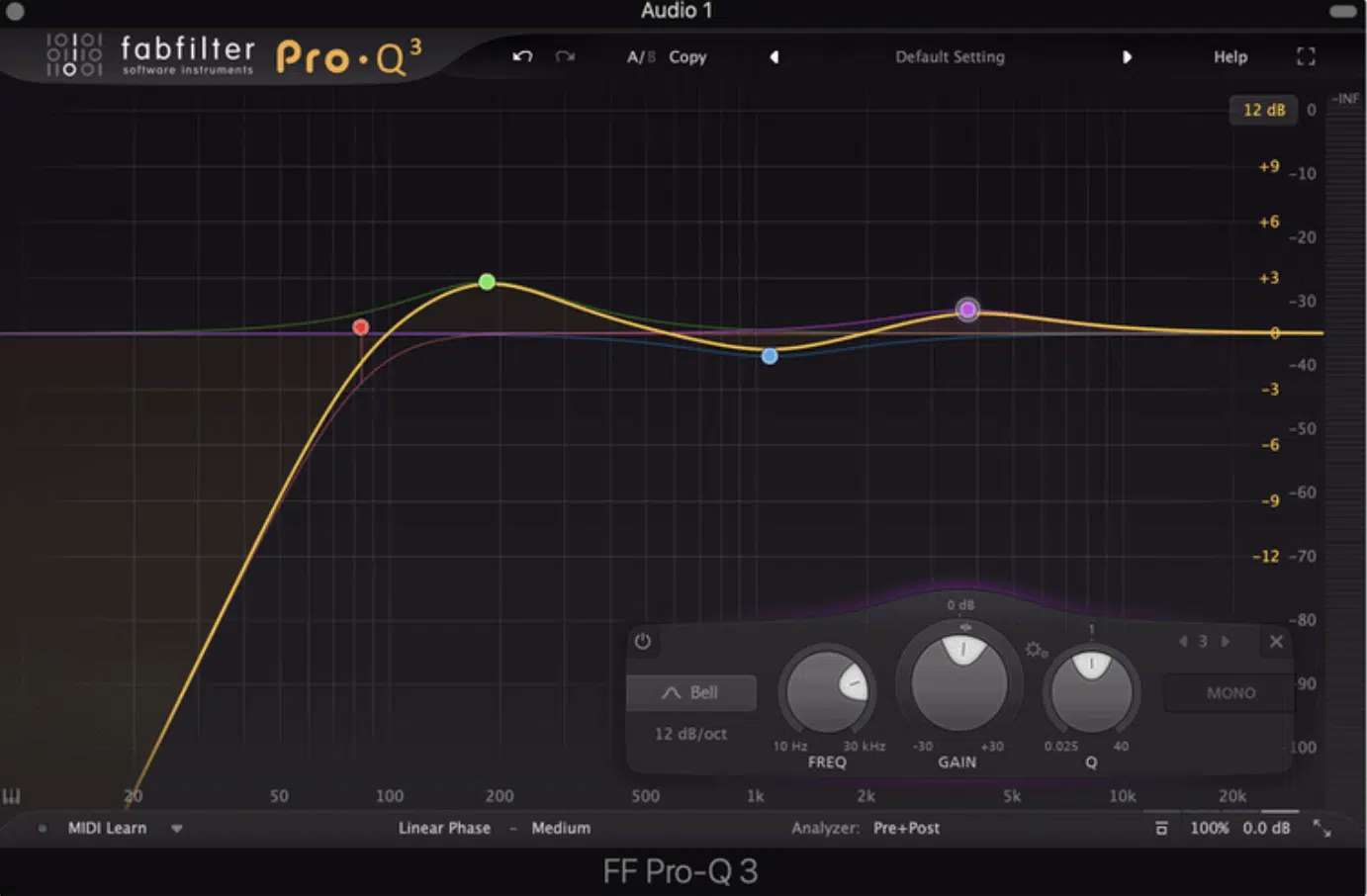
A linear phase EQ maintains the phase relationship between frequencies, making it perfect for mastering (when phase coherence is everything).
Unlike minimum phase EQs, which can introduce phase shifts that affect the clarity of a mix, linear phase EQs provide a transparent and clean adjustment across the audio spectrum.
If you’re working on stereo tracks or full mixes, where you don’t want to disrupt the stereo image in any way, it’s perfect.
In other words, you might use a linear phase EQ to apply subtle boosts or cuts to the high frequencies in a mix to add clarity without altering the phase relationship of other instruments.
NOTE: Linear phase EQs can introduce latency, so they’re best used in the mastering phase or on elements that don’t require real-time processing.
6. Bell Curve EQ
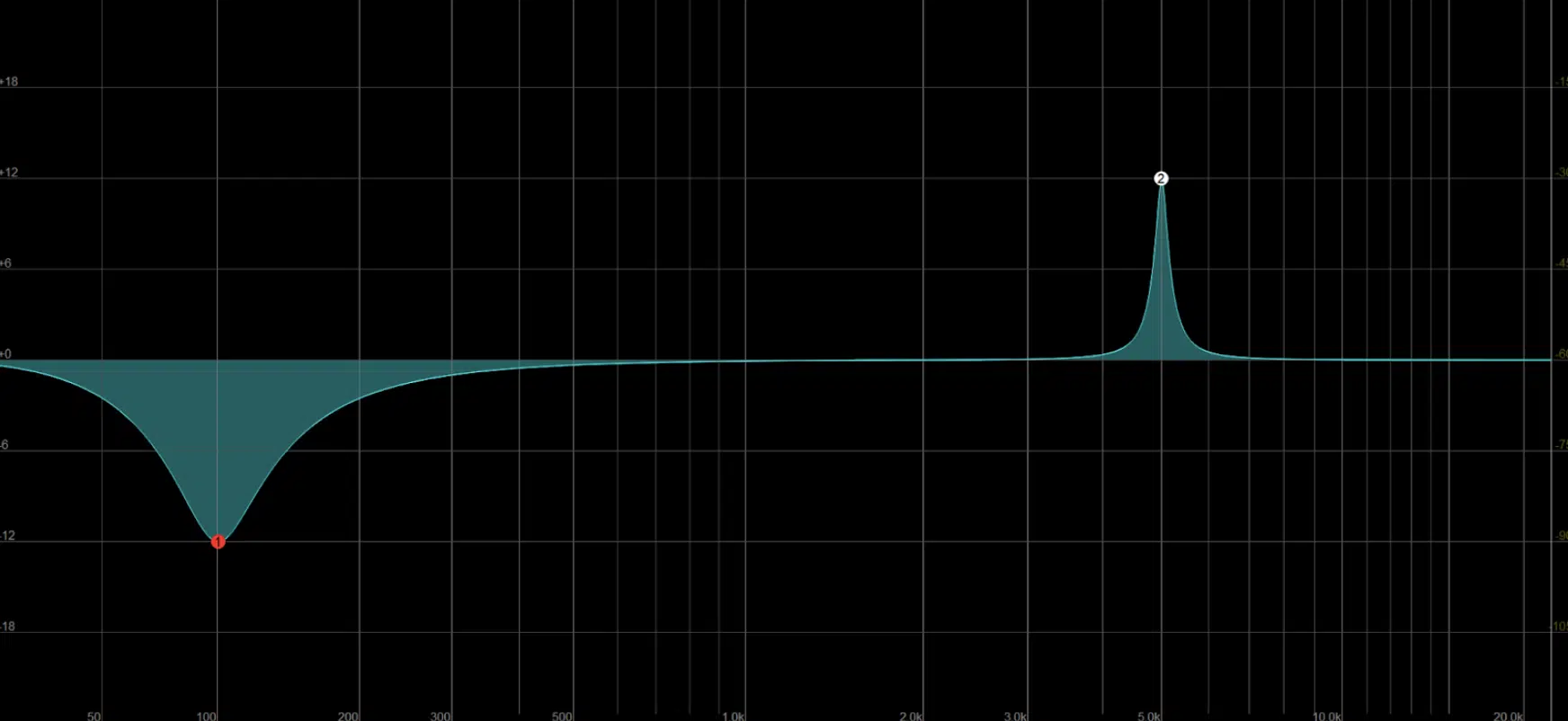
A bell curve EQ targets a specific range of frequencies with a smooth, bell-shaped curve, which is ideal for more focused adjustments.
This type of EQ is great for boosts frequencies in a snare drum to add more punch or cutting nasal tones in a vocal track.
When using a bell curve EQ:
- Start with a wide bandwidth for a more natural adjustment.
- Then, narrow it down as needed to home in on a center frequency that needs precise control.
Bell curves excel when you want to make subtle yet impactful changes, like lifting the presence of a lead guitar or attenuating any boxiness in a kick drum.
You can use bell curves on parametric and dynamic equalizers to achieve specific tonal characteristics without impacting other areas of the mix, which I personally love doing.
7. Notch EQ
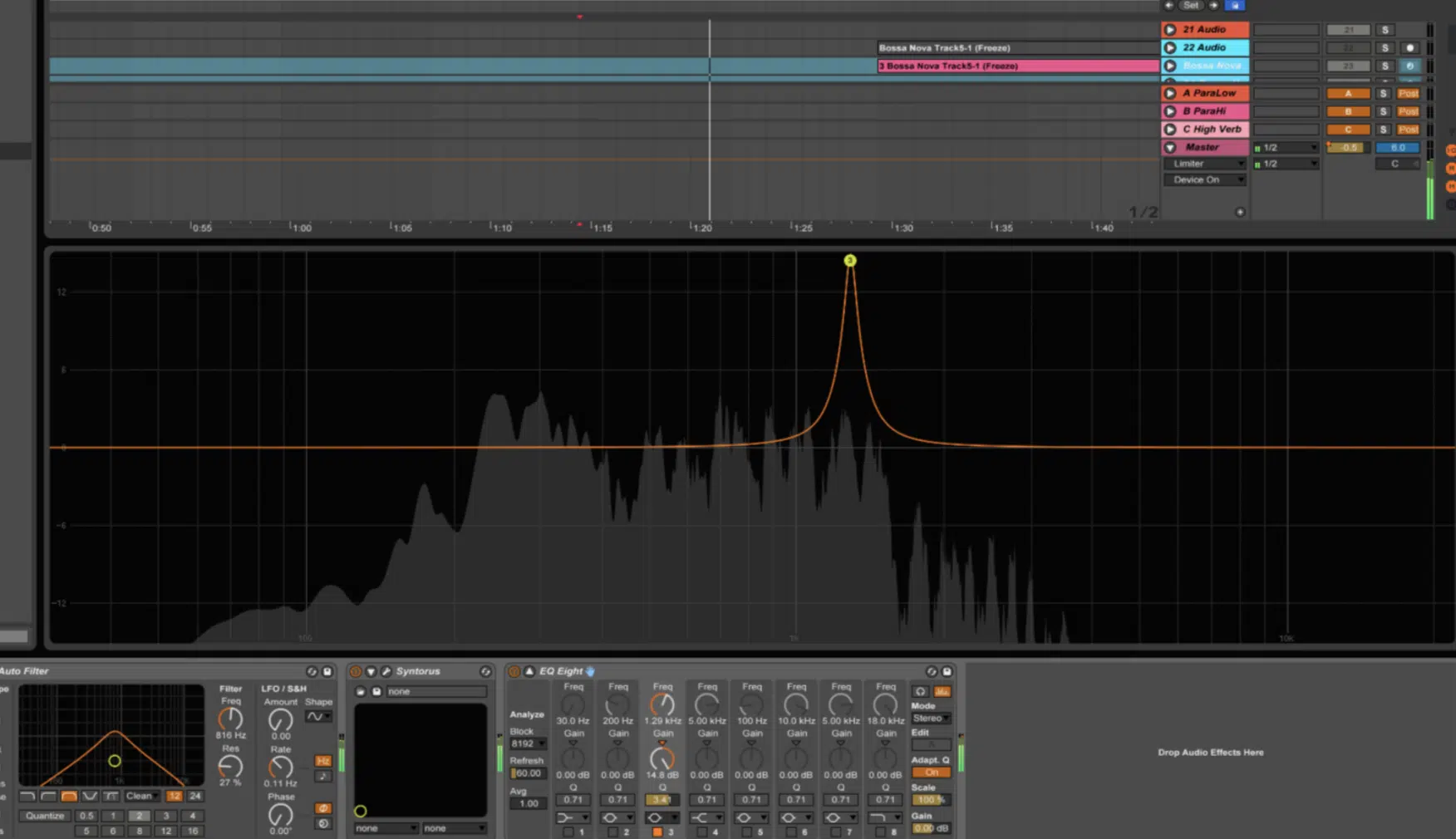
A notch EQ allows you to make deep cuts to very narrow frequency bands so it’s ideal for removing unwanted noise or resonant frequencies.
For example, if you’re dealing with hum or a specific ring in a drum recording, a notch filter can surgically remove that problem without affecting the rest of the audio spectrum.
Because of its ability to zero in on certain frequencies, a notch EQ is also excellent for cleaning up vocal recordings with minimal tonal impact.
Use a notch filter when you need to remove specific resonances that can’t be solved with broader filter shapes.
Just be cautious… Cutting too much with a notch EQ can make the mix sound unnatural, so always listen closely as you make adjustments.
Specialty EQ Types for Producers
Aside from the more common EQ types, there are some specialty EQ types that serve specific purposes in mixing and mastering. Understanding how and when to use these specialty EQ types as opposed to regular types of EQ can give you more creative control over your mixes.
8. Mid/Side EQ
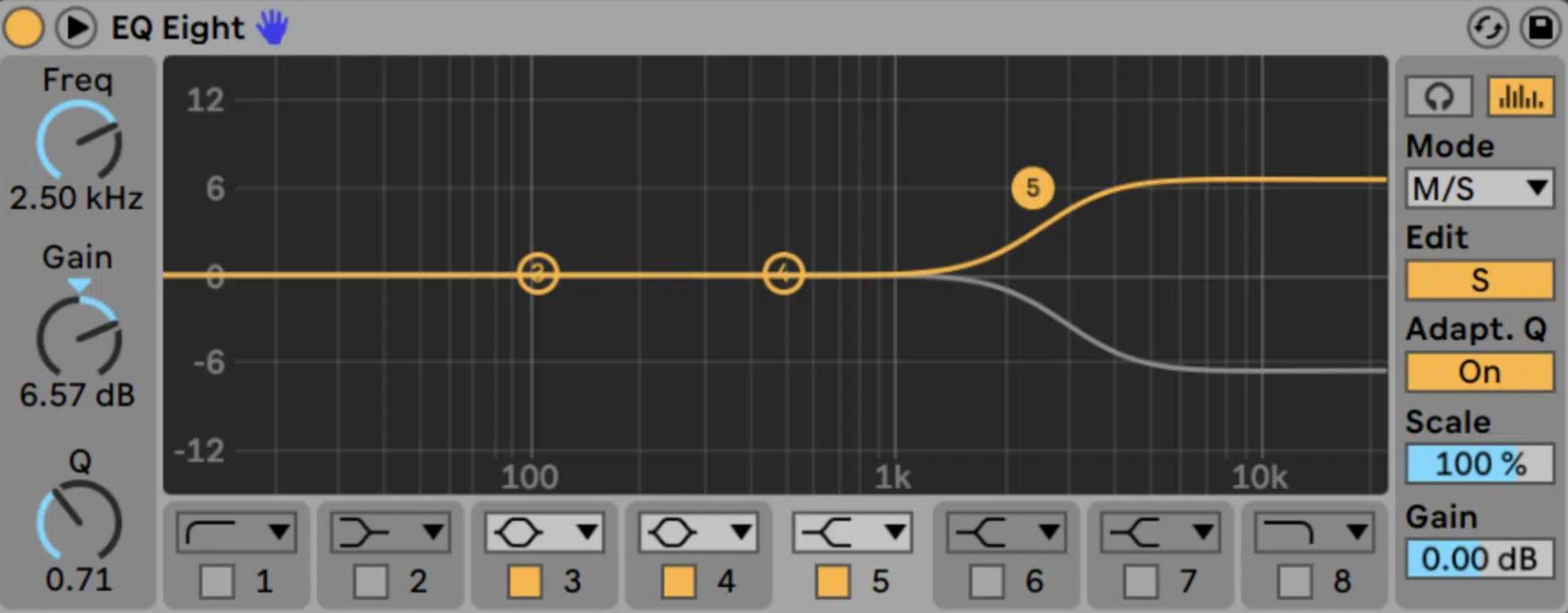
A Mid/Side EQ allows you to process the mid and side components of a stereo signal independently, giving you advanced control over the stereo width and focus of a mix.
This is useful for widening synth pads or narrowing a vocal that sits in the center of a mix so each element has its own space.
For example, you can use a Mid/Side EQ to boost the high frequencies in the sides of a mix 一 enhancing the stereo image without affecting the center.
Also, enhancing high frequencies in the sides while keeping the mid frequencies untouched can create a crisp and detailed stereo image.
It’s perfect for adding excitement to chorus sections or emphasizing spatial effects.
On the flip side, cutting low frequencies from the sides can help tighten the low end while keeping the bass focused.
Reducing bass frequencies in the sides also prevents low-end buildup in reverb tails or stereo effects for a cleaner and more controlled mix.
If you want your mixes to sound wide and immersive, try experimenting with Mid/Side EQ adjustments to bring out the best of both the mono and stereo elements.
9. High-Pass and Low-Pass Filters
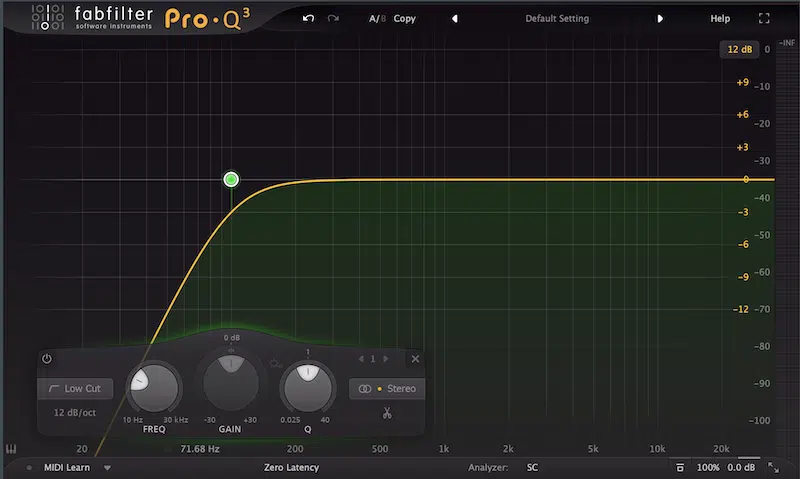
High-pass filter
High-pass filters remove all frequencies below a specified cutoff point, while low-pass filters do the opposite by removing all frequencies above a set cutoff frequency.
These EQ types are essential for cleaning up unwanted rumble or hiss in a mix.
For example, applying a high-pass filter on a vocal track can remove unnecessary low-end noise without affecting the clarity of the voice.
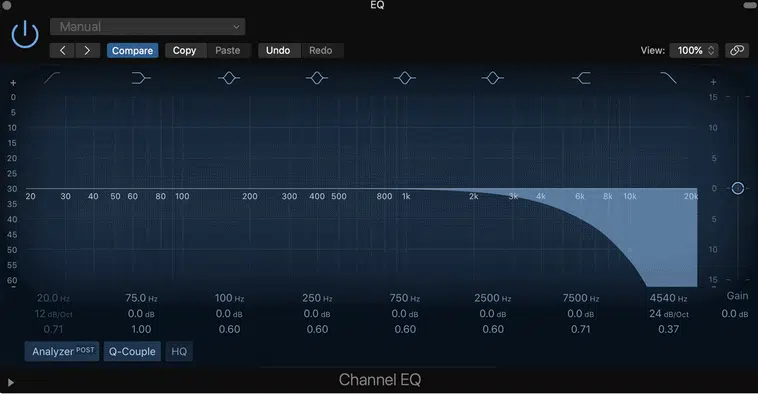
Low-pass filters
A low-pass filter on a hi-hat track, on the other hand, can soften the brightness and make room for other high frequencies in the mix.
You can also use band-pass filters, which combine both high-pass and low-pass filters, to isolate a specific range of frequencies, like highlighting a mid-range vocal or instrument.
Adjust the filter slope to control how gradually or steeply the filter rolls off, depending on the sound you’re aiming for.
For example, a gentle slope on a high-pass filter can subtly reduce rumble without thinning out the low end too much, while a steep slope can aggressively cut unwanted bass frequencies.
On a low-pass filter, a shallow slope might soften the high frequencies in a mix to create a vintage or lo-fi effect, while a steeper slope can sharply remove harsh highs.
NOTE: A band-pass filter is an EQ type that allows only a specific range of frequencies to pass through while attenuating everything outside that range.
This makes a band-pass filter ideal for isolating certain frequency bands when you want to focus on or highlight a particular element in your mix, such as creating a telephone effect on vocals or shaping drum room ambiance.
10. Tilt EQ
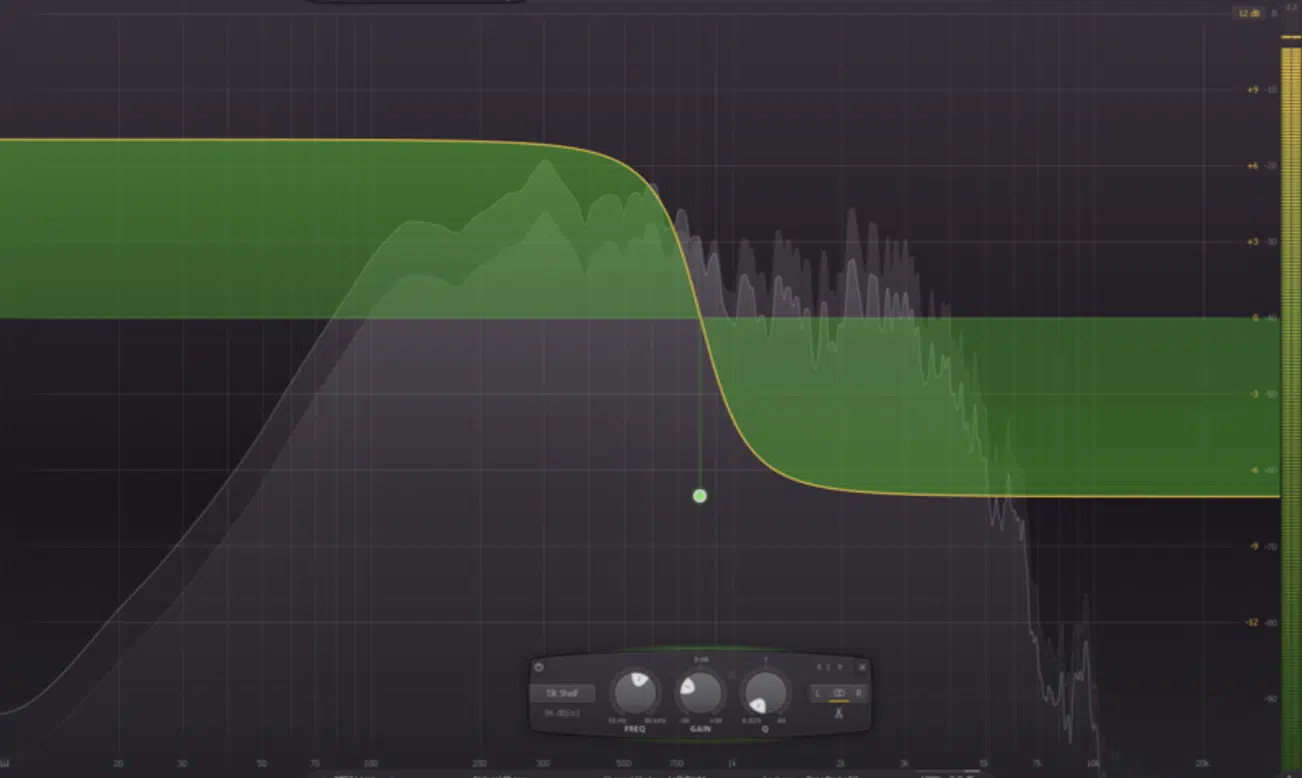
A tilt EQ is a unique tool that actually tilts the entire audio spectrum around a central cutoff frequency, boosting one side while cutting the other.
This is perfect for quick tonal adjustments, like adding brightness while reducing muddiness in a mix.
For example, if you’re working on a track that sounds too dark or muffled, you can use a tilt EQ to boost the higher frequencies while gently cutting the low frequencies.
This results in a brighter, more open sound, perfect for bringing vocals, guitars, or percussion to life.
Conversely, if your mix feels too harsh or thin, you can reverse the tilt, boosting the low frequencies to add warmth and body while taming overly bright high frequencies.
Tilt EQs are simple yet very effective tools for achieving a balanced sound with minimal effort.
NOTE: They are especially valuable in mastering or on stereo bus tracks where a slight shift in tonal balance can dramatically affect the overall sound.
11. Baxandall EQ
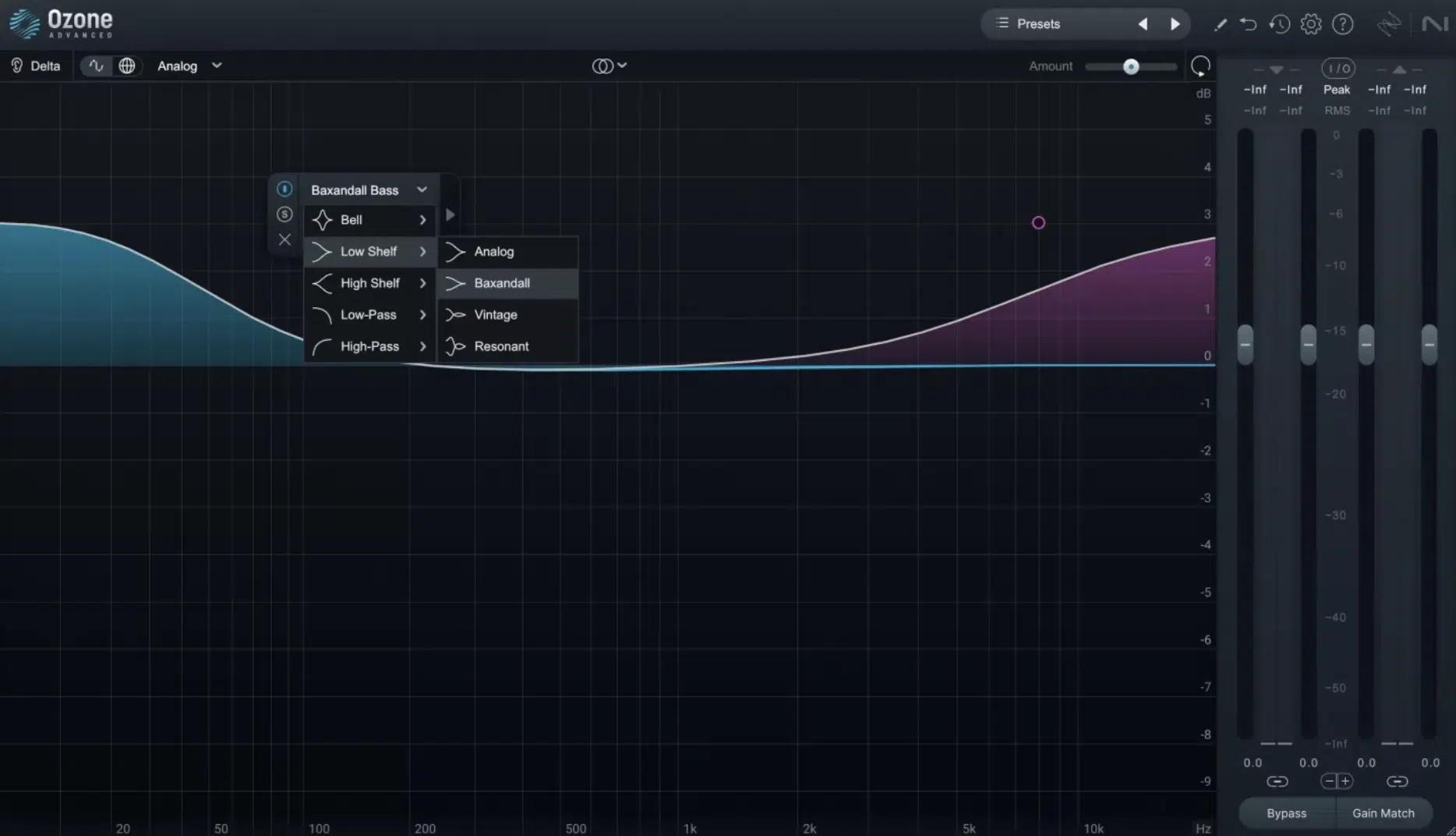
Baxandall EQ types are known for its smooth, musical predetermined filter curves that work well for broad tonal adjustments, used in a bunch of mastering processes.
Unlike more surgical EQ types that focus on narrow frequency bands, the Baxandall EQ provides a more gradual, natural-sounding curve that gently enhances the overall tonal balance of a mix.
With its natural-sounding shelf filter shapes, a Baxandall EQ is great for enhancing the overall warmth and air of a mix.
Its high-shelf filter can add a silky presence to vocals, strings, or cymbals, lifting the high frequencies without becoming shrill or piercing.
Its low-shelving filter can add depth and richness to the low frequencies 一 making it ideal for adding weight to a bassline or warmth to a kick drum.
If you want to add a subtle lift to the high frequencies or a gentle boost to the low end, this EQ type provides a transparent way to do so.
For example, you might use a Baxandall EQ to add some “air” to a full mix, gently boosting above 10 kHz to bring out the shimmer in hi-hats and vocals (while maintaining a smooth, uncolored tone).
Use it when you need to enhance without coloring the sound too aggressively, maintaining the integrity of the original audio.
The Most Popular EQ Plugins (All EQ Types)
There are countless EQ plugins available, each offering unique features and functionalities that cater to different EQ types. So, for this bonus section, let’s break down some of the most popular EQ plugins that provide a range of options from parametric EQs to dynamic equalizers. They cover all the bases for your mixing and mastering needs, so let’s break it down (including the EQ types).
-
Sound Doctor by Unison Audio
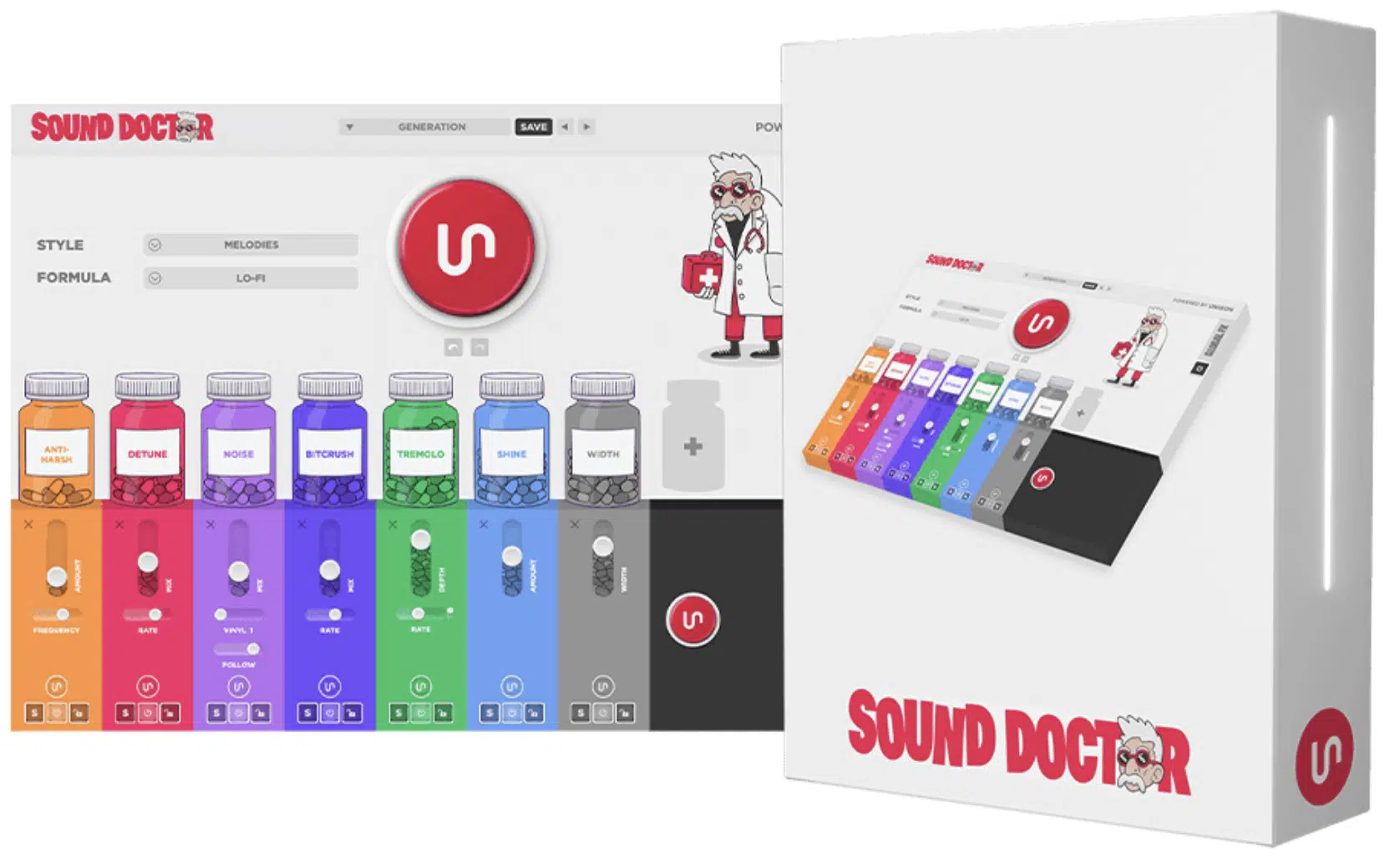
Sound Doctor by Unison Audio is a versatile parametric and dynamic EQ plugin designed to give you comprehensive control over your mix.
It combines the detailed frequency control of a parametric EQ with the adaptive processing capabilities of a dynamic equalizer.
It’s perfect for both precise cuts and dynamic adjustments.
With this legendary EQ plugin, you can flawlessly handle midrange bell curve filters, boost frequencies for presence, or attenuate harsh high frequencies for a pro sound.
Its intuitive interface and high-quality algorithms make it a favorite for any producer to enhance their tracks with surgical precision and creative flair.
-
Stock EQ Plugins
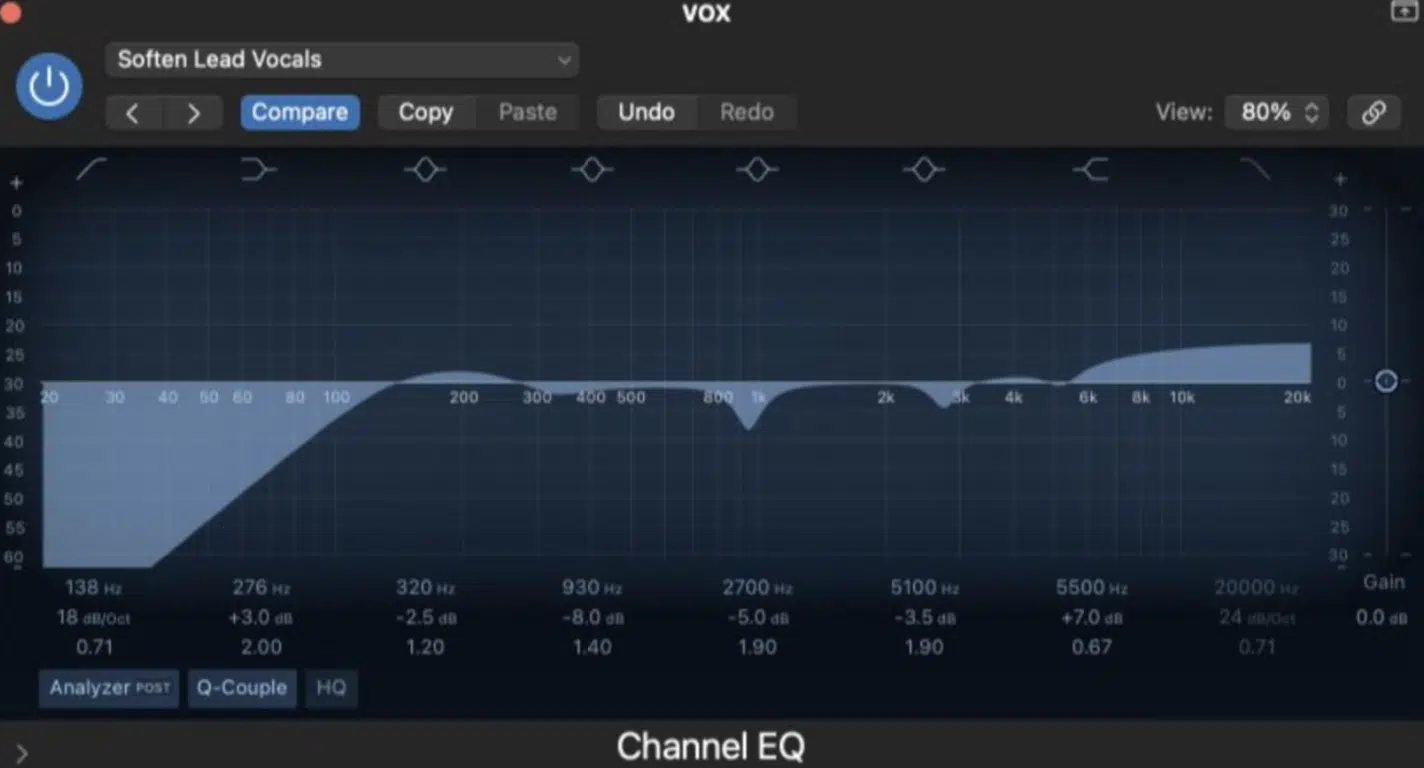
Logic Pro Channel EQ
Stock EQ plugins, like Logic Pro’s Channel EQ and Ableton Live’s EQ Eight, typically offer digital parametric EQ functionality that can handle both simple and complex EQ tasks.
These EQ plugins come with fully parametric EQ controls 一 allowing you to adjust the center frequency, bandwidth, and gain to deal with specific frequencies in a mix.
While they might not have all the bells and whistles of third-party options, stock EQs are incredibly reliable for basic and intermediate mixing needs.
-
FabFilter Pro-Q 3
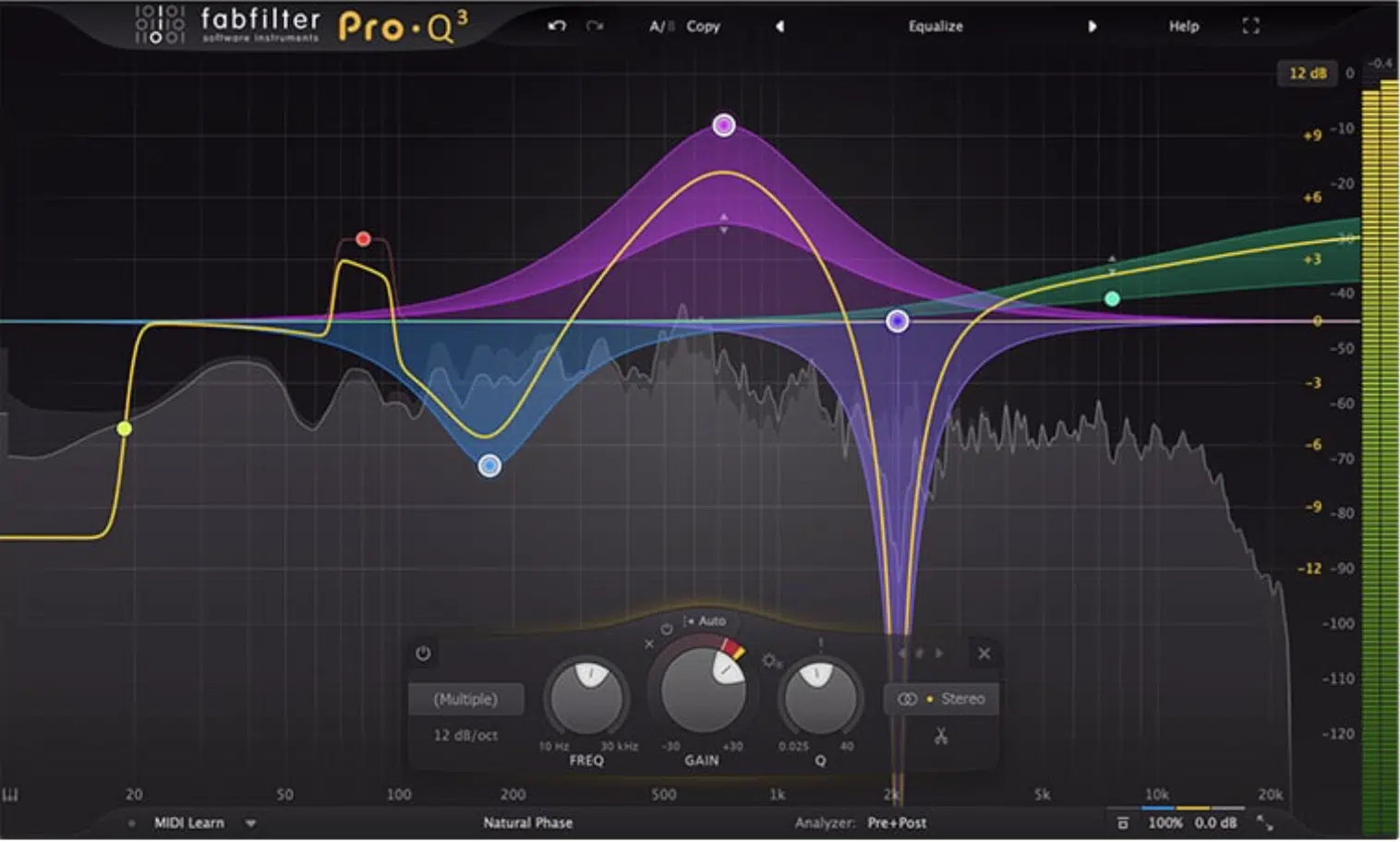
FabFilter Pro-Q 3 is a top-tier digital parametric EQ plugin known for its clean interface and flexible features, including linear phase EQ modes.
You get detailed control over frequency bands with options to create bell curve filters, high-pass, low-pass, and shelf filters for ultimate shaping of the audio spectrum.
It’s a go-to for many because of its versatility in both mixing and mastering, offering precise EQ adjustments without introducing unwanted artifacts.
-
Waves SSL G-Equalizer

Waves SSL G-Equalizer is a graphic EQ plugin that emulates the classic SSL console EQ, famous for its distinct analog sound and punchy characteristics.
With its fixed frequency points and unique filter shapes, this EQ is perfect for adding analog warmth and energy to tracks 一 making it ideal for vocals, drums, and guitars.
The SSL G-Equalizer is especially favored for quick adjustments where you want to emphasize or tame specific frequency bands without overthinking the parameters.
-
API 550A/B EQ
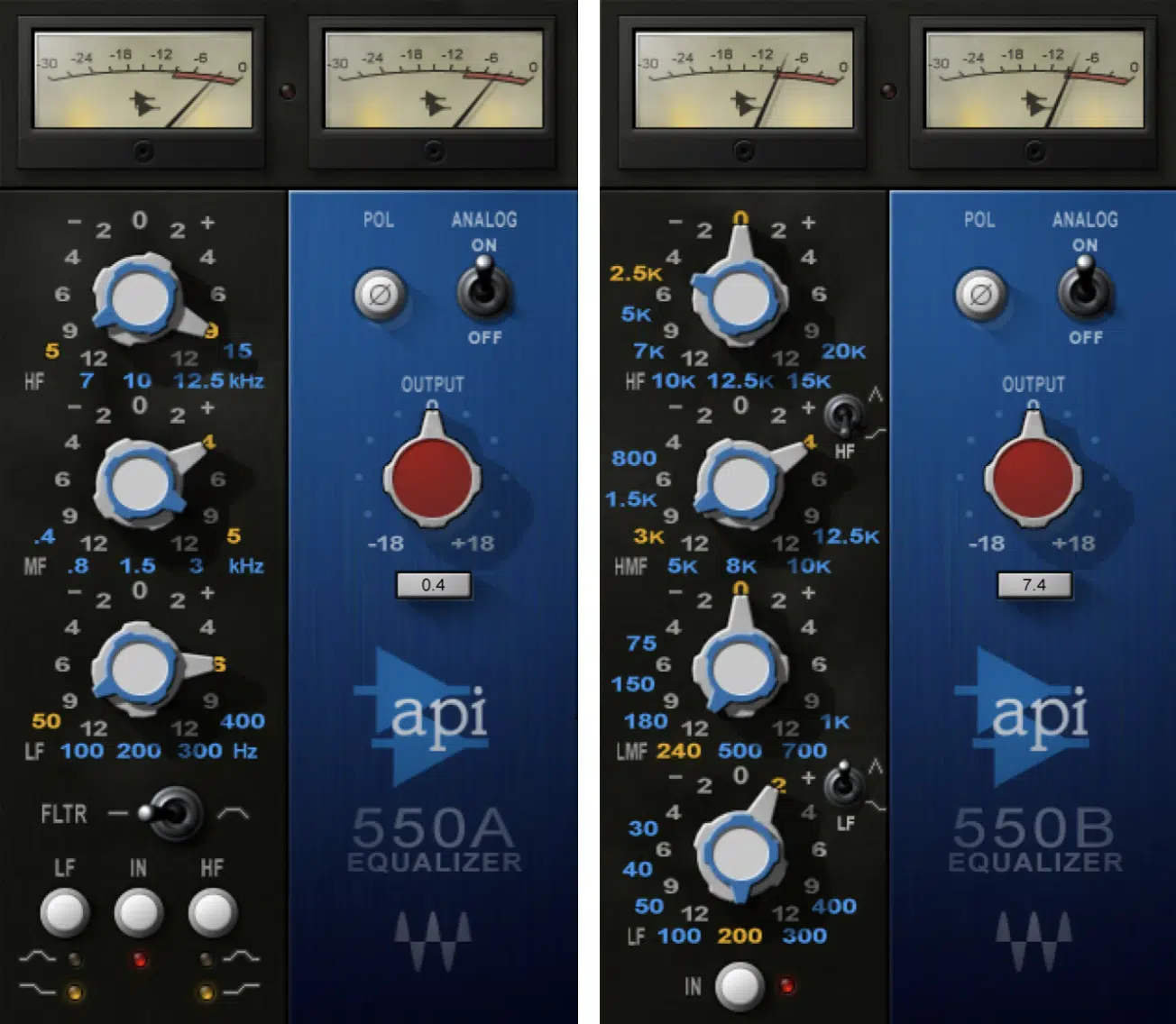
The API 550A/B EQs are iconic semi-parametric EQ plugins that provide precise, responsive EQ curves.
These EQs feature stepped frequency controls with selectable bands so you can implement smooth, musical boost and cuts.
They’re perfect when you need to enhance low frequencies with a low-shelving filter or add brilliance to the top end with a high-shelf filter.
All while still retaining the integrity of your original signal.
-
Neve 1073 EQ
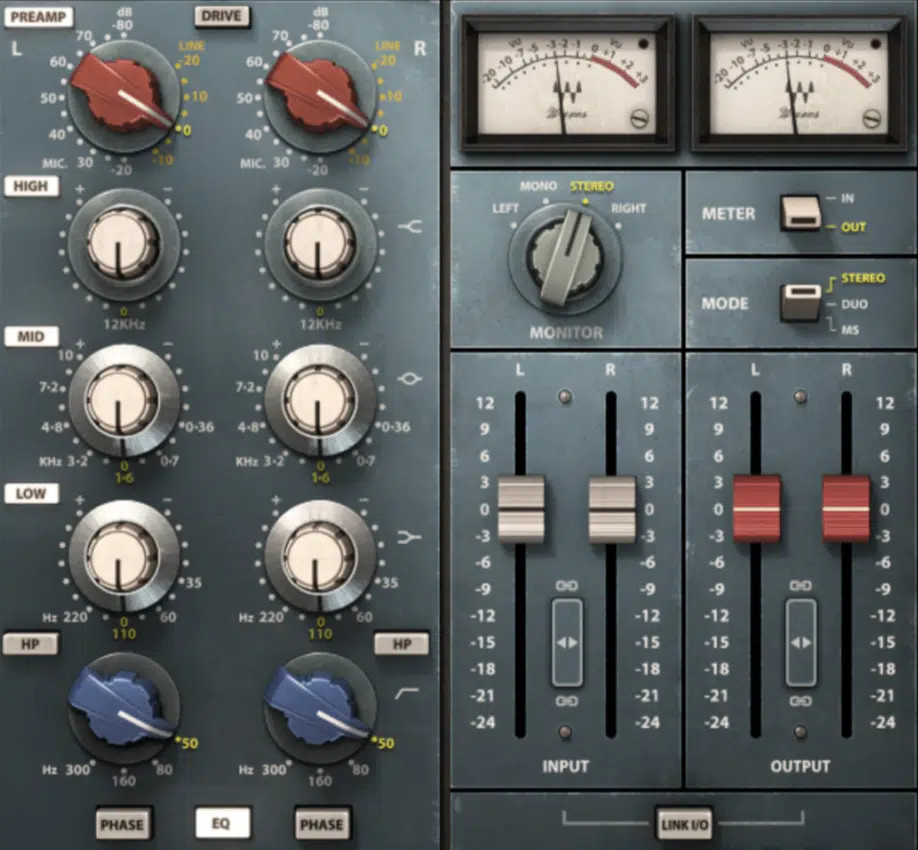
Neve 1073 EQ is one of the best semi-parametric EQs in the game, loved for its rich, analog tone and smooth handling of the frequency spectrum.
It’s super effective for boosting frequencies in the mids or adding shine to high frequencies (thanks to its classic shelf filters and broad bell curves).
This EQ plugin is perfect when you’re looking to infuse warmth and character into vocals, guitars, and drums 一 adding that unmistakable Neve color to your mix and learn about different EQ types.
-
Pultec EQP-1A
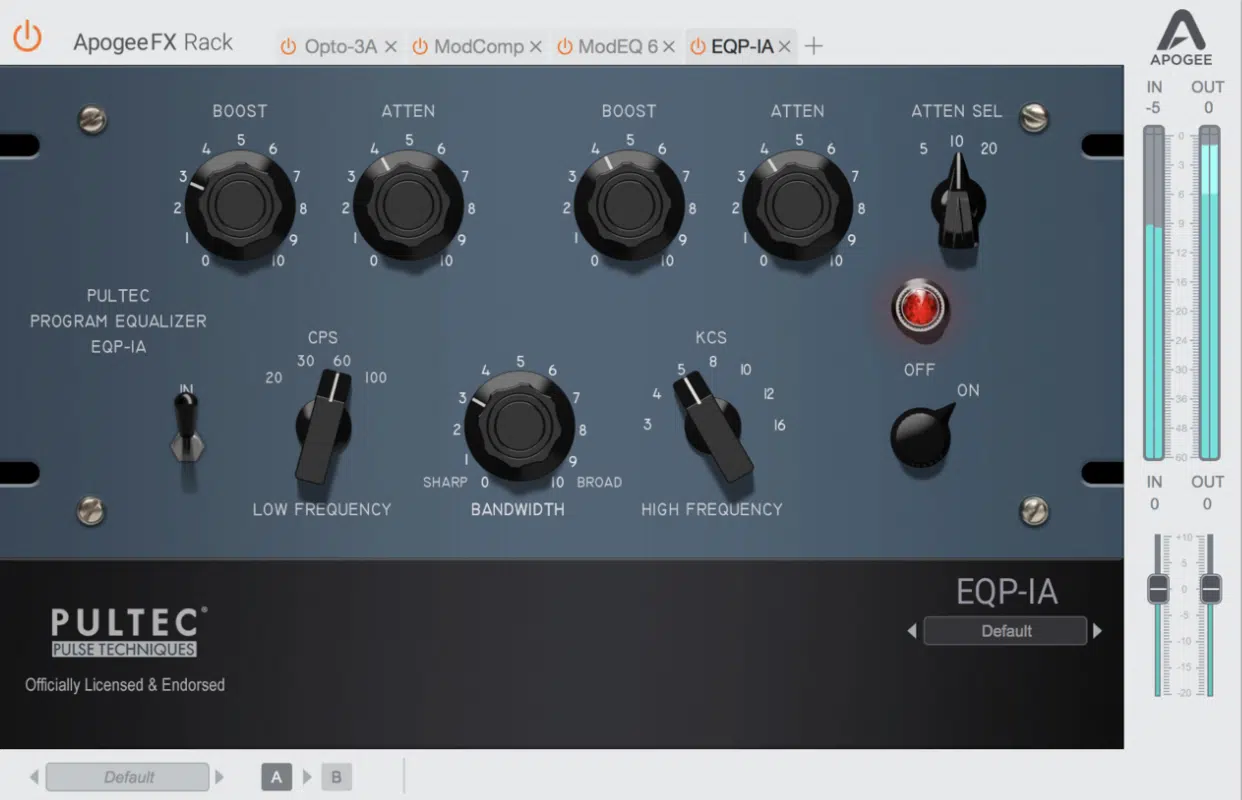
Pultec EQP-1A is a vintage passive EQ plugin that boosts and attenuates frequencies (the same frequency band, to be exact), to create a smooth, natural-sounding EQ curve.
This technique is great for adding low-end punch to a kick drum while maintaining clarity, or enhancing high frequencies in a mix without sounding harsh.
The Pultec’s classic tube warmth and gentle filter slope make it an excellent choice for both mixing and mastering.
-
iZotope Ozone 11 EQ (Free)
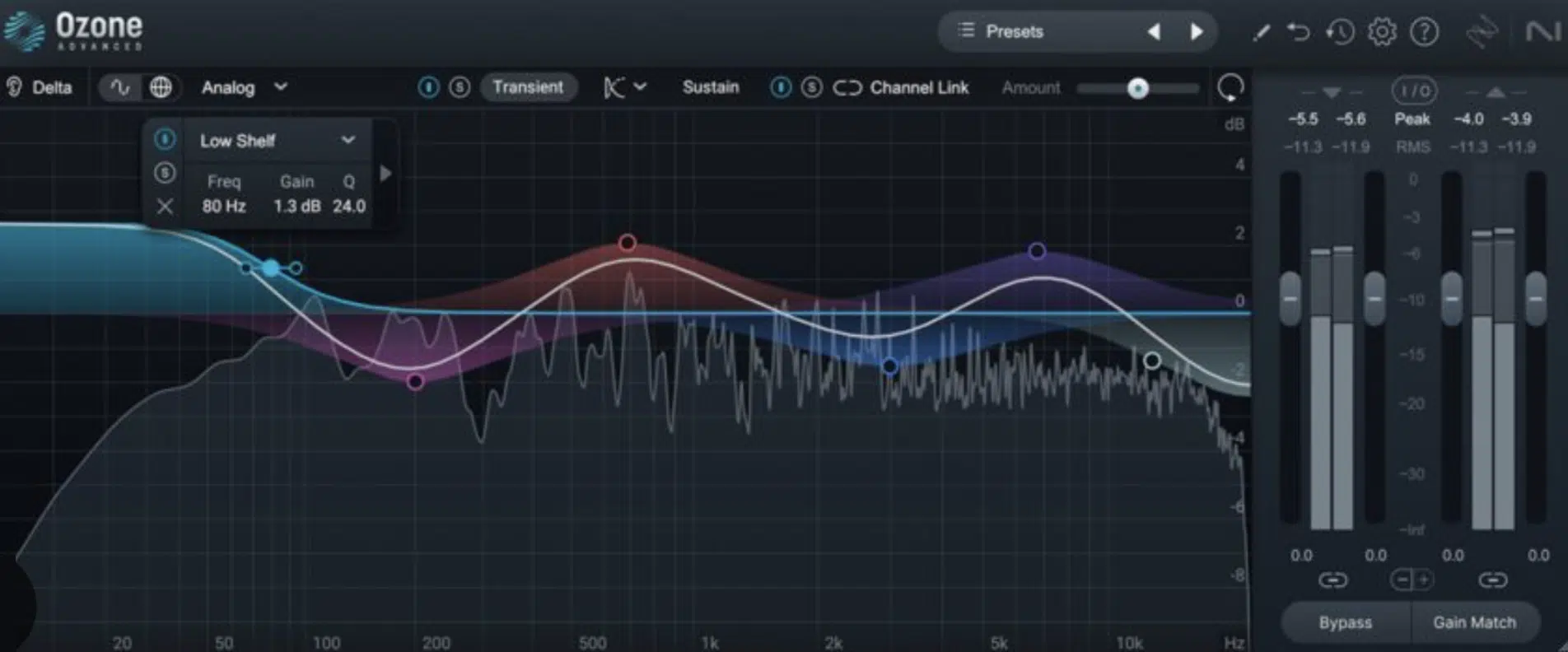
iZotope Ozone 11 EQ is an epic (free!) dynamic and linear phase EQ plugin designed primarily for mastering, though it works well in mixing too.
It features both minimum phase EQs and linear phase EQ modes, offering you transparent EQ adjustments that keep the audio spectrum intact without phase shifts.
You can easily address specific frequencies dynamically so your master retains clarity and punch across the entire frequency range.
EQ Types: Final Thoughts
Bottom line, understanding the different EQ types is essential for any music producer looking to create professional, polished mixes.
Each EQ type, from parametric EQ types to dynamic EQ types, offers unique features and functionalities that can help you shape your sound with precision/creativity.
By mastering these EQ types, you can tackle any mixing or mastering challenge, enhancing the best elements of your tracks.
And, ensure your music stands out in today’s super crowded music industry.
So, keep experimenting, trust your ears, and remember that knowing how to use all the EQ types can make all the difference in achieving a clean, balanced, and impactful mix.
Until next time…







Leave a Reply
You must belogged in to post a comment.